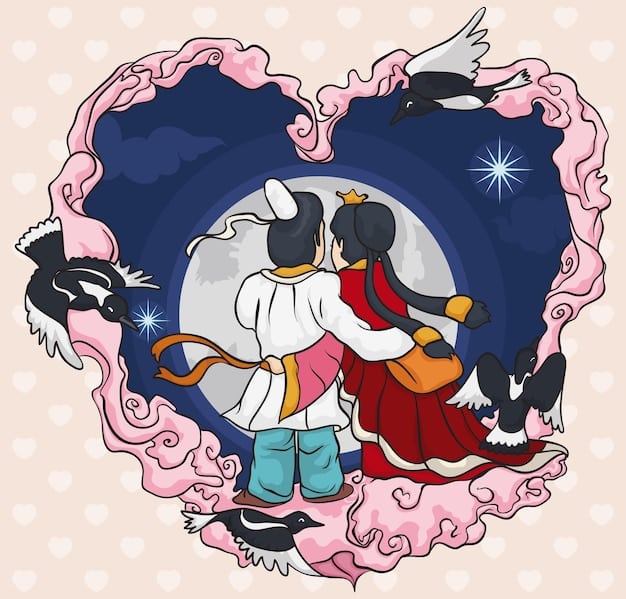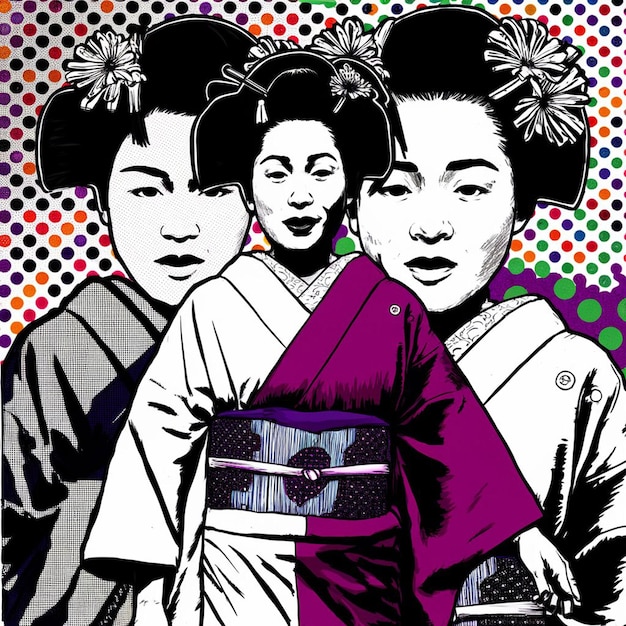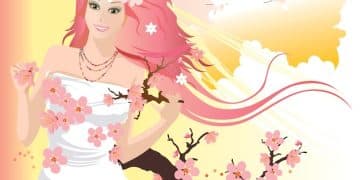Unveiling the Magic: A Deep Dive into Shojo Manga Reviews

Shojo manga reviews offer a critical lens through which to explore the enchanting worlds of romance, friendship, and personal growth tailored specifically for a young female audience, providing valuable insights into storytelling techniques, character development, and thematic resonance.
Shojo manga, with its captivating storylines and expressive art, has charmed readers for decades. Shojo manga reviews help navigate this vast landscape, offering insights into the best series and hidden gems for fans and newcomers alike.
What is Shojo Manga? A Brief Overview
Shojo manga, meaning “young girl’s manga,” is a genre of Japanese comics primarily targeted at a female audience. However, its appeal extends far beyond this demographic. Understanding the nuances of shojo manga involves recognizing its diverse subgenres and artistic conventions.
The genre’s defining characteristics include a strong emphasis on emotional narratives, character-driven plots, and intricate artwork that often employs visual metaphors and symbolic imagery to convey complex themes.
Key Characteristics of Shojo Manga
Shojo manga distinguishes itself through various elements that contribute to its unique appeal. These include a focus on interpersonal relationships, emotional depth, and visually distinctive aesthetics.
- Emotional Depth: Stories often delve into the inner lives of characters, exploring their feelings, motivations, and personal growth.
- Relationship Focus: Many plots revolve around romantic relationships, friendships, and family dynamics, highlighting the importance of human connection.
- Visual Aesthetics: The artwork is often characterized by large, expressive eyes, flowing hair, and delicate lines, enhancing the emotional impact of the narrative.

Popular Themes in Shojo Manga
Several recurring themes dominate shojo manga, each contributing to the genre’s enduring popularity and universal appeal. These themes resonate with readers by reflecting common experiences and aspirations.
- Romance: Love stories are central, often exploring the complexities of first love, unrequited feelings, and the challenges of maintaining relationships.
- Friendship: The importance of strong bonds between friends is frequently highlighted, showcasing the support and camaraderie that help characters overcome obstacles.
- Self-Discovery: Characters often embark on journeys of self-discovery, learning about their strengths, weaknesses, and the importance of staying true to themselves.
Shojo manga provides a rich tapestry of narratives that celebrate emotional depth, human connection, and personal growth, making it a beloved genre for readers of all ages.
Why Read Shojo Manga Reviews?
Navigating the extensive world of shojo manga can be daunting. Shojo manga reviews offer a valuable service by providing insights, critiques, and recommendations to help readers choose the best titles. These reviews serve as a guide, highlighting notable series and hidden gems.
By consulting these reviews, readers can make informed decisions about which manga to explore, saving time and ensuring a more enjoyable reading experience. Additionally, reviews offer a deeper understanding of the nuances and merits of different series.
Benefits of Reading Reviews
Reading shojo manga reviews provides numerous benefits that enhance the overall reading experience. These benefits range from saving time and discovering new favorites to gaining a deeper understanding of the genre.
- Time Saving: Reviews help readers quickly identify high-quality titles, avoiding the time-consuming process of trial and error.
- Discovery of New Series: Reviews often spotlight lesser-known series, introducing readers to new authors and unique story arcs.
- Informed Decisions: By providing detailed analyses, reviews enable readers to make informed choices based on their personal preferences.
What to Look For in a Good Review
Not all reviews are created equal. To maximize their usefulness, it’s important to know what to look for in a good review. Key elements include objectivity, comprehensive analysis, and relevance to the reader’s interests.
- Objectivity: A good review should present a balanced perspective, acknowledging both the strengths and weaknesses of the manga.
- Comprehensive Analysis: The review should cover various aspects, including plot, character development, artwork, and thematic elements.
- Relevance: Look for reviews that align with your personal preferences, considering factors such as genre, themes, and art style.
Shojo manga reviews are an invaluable resource for anyone looking to explore the genre, providing guidance, insights, and recommendations to ensure an enriching reading experience.
Key Elements Analyzed in Shojo Manga Reviews
When evaluating shojo manga, reviewers typically focus on several key elements that contribute to the overall quality and appeal of the series. These elements include plot development, character depth, artistic style, and thematic elements.
By examining these aspects, reviewers provide a comprehensive assessment that helps readers understand what to expect from a particular manga. Furthermore, this analysis allows for a greater appreciation of the creative efforts involved in producing these works.
Plot and Storytelling
The plot is the backbone of any manga, and its development is crucial to keeping readers engaged. Reviewers assess the originality, pacing, and coherence of the storyline.
A well-crafted plot should have a clear beginning, a compelling middle, and a satisfying conclusion. Additionally, the story should be free of logical inconsistencies and plot holes.
Character Development
Characters are the heart of shojo manga, and their development is essential to creating emotional resonance. Reviewers analyze the depth, relatability, and growth of the main characters.
- Depth: Characters should be complex and multifaceted, with their own motivations, flaws, and strengths.
- Relatability: Readers should be able to connect with the characters on an emotional level, understanding their struggles and aspirations.
- Growth: Characters should evolve throughout the series, learning from their experiences and developing as individuals.

Artistic Style
The artwork in shojo manga is often highly stylized and expressive. Reviewers assess the quality of the drawing, the use of visual effects, and the overall aesthetic appeal.
- Drawing Quality: The linework should be clean and precise, with attention to detail in character designs and backgrounds.
- Visual Effects: The use of speed lines, emotional symbols, and other visual cues should enhance the storytelling and create a visually engaging experience.
- Aesthetic Appeal: The overall art style should be pleasing to the eye and complement the tone and themes of the manga.
By considering these key elements, shojo manga reviews provide thorough evaluations that help readers determine whether a particular series is worth exploring, enhancing their overall reading experience.
Popular Shojo Manga Series and Their Reviews
The world of shojo manga is filled with numerous beloved series that have captivated readers for years. Examining popular titles and their reviews provides valuable insights into what makes these works so successful.
By analyzing critical reception and reader feedback, one can gain a better understanding of the key elements that contribute to the enduring popularity of these series. This knowledge can then be applied to discovering other similar titles.
“Fruits Basket” by Natsuki Takaya
“Fruits Basket” is a classic shojo manga known for its heartwarming story and emotional depth. The series follows Tohru Honda, an orphaned girl who discovers that the Sohma family members are possessed by the animals of the Chinese zodiac.
Reviews often praise the series for its well-developed characters, exploration of difficult themes, and ability to evoke strong emotions in readers. The series has been adapted into multiple anime adaptations, further cementing its status as a beloved shojo classic.
“Nana” by Ai Yazawa
“Nana” is a more mature shojo manga that explores the lives of two young women named Nana who form an unlikely friendship. The series delves into themes of love, ambition, and the challenges of adulthood.
- Plot Complexity: The storyline is intricate and nuanced, reflecting the complexities of real-life relationships.
- Character Depth: The characters are flawed and relatable, making their struggles and triumphs all the more compelling.
- Artistic Style: Yazawa’s distinctive art style is both stylish and expressive, perfectly capturing the emotions of the characters.
“Ouran High School Host Club” by Bisco Hatori
“Ouran High School Host Club” is a comedic shojo manga that follows Haruhi Fujioka, a scholarship student who accidentally stumbles upon the Ouran Host Club.
- Humor: The series is known for its witty dialogue, slapstick humor, and playful subversion of shojo tropes.
- Character Dynamics: The interactions between the members of the Host Club are both hilarious and heartwarming.
- Artistic Style: Hatori’s art style is energetic and expressive, perfectly capturing the comedic tone of the series.
Exploring popular shojo manga series and their reviews offers valuable insights into what makes these works so successful, providing a foundation for discovering new favorites and appreciating the depth of the genre.
Finding Reliable Shojo Manga Review Sources
With the abundance of information available online, it’s crucial to find reliable sources for shojo manga reviews. Identifying reputable websites, blogs, and reviewers ensures that you’re getting accurate and trustworthy information.
These reliable sources often have established credibility, a consistent track record of quality reviews, and a commitment to providing unbiased assessments. Additionally, they are often staffed by knowledgeable individuals with a passion for shojo manga.
Reputable Websites and Blogs
Several websites and blogs have established themselves as trustworthy sources for shojo manga reviews. These platforms often have dedicated review teams and a consistent commitment to quality.
- Anime News Network: Offers comprehensive reviews of anime and manga, including shojo titles, with a focus on objective analysis.
- MyAnimeList: Features user reviews and ratings, providing a broad range of opinions on various shojo series.
- Goodreads: Allows readers to share their thoughts and ratings on manga, offering a valuable perspective from the community.
Independent Reviewers and Critics
Individual reviewers and critics can also be valuable sources of information, particularly if they have a strong reputation and a clear understanding of the shojo genre.
Look for reviewers who demonstrate a deep knowledge of shojo manga, a consistent track record of quality reviews, and a commitment to providing unbiased assessments.
Checking for Bias and Objectivity
When evaluating review sources, it’s important to check for potential bias and ensure that the reviews are objective. Consider the reviewer’s background, affiliations, and potential conflicts of interest.
- Background: Understand the reviewer’s expertise and knowledge of shojo manga.
- Affiliations: Be aware of any potential affiliations with publishers or creators that could influence their reviews.
- Conflicts of Interest: Check for any potential conflicts of interest that could compromise the reviewer’s objectivity.
Locating reliable sources for shojo manga reviews is essential for making informed decisions and ensuring an enriching reading experience, allowing you to discover new favorites and appreciate the depth of the genre.
Future Trends in Shojo Manga and Reviews
The shojo manga landscape is constantly evolving, with new trends and innovations emerging regularly. Staying informed about these developments is crucial for both readers and reviewers alike as the genre continues to grow and adapt.
Understanding these trends allows readers to anticipate future releases and reviewers to adapt their approaches to better assess the evolving landscape. Additionally, by embracing innovation, the shojo genre can continue to thrive and captivate audiences.
Digital Distribution and Online Platforms
Digital distribution has revolutionized the way manga is published and consumed, making it more accessible than ever before. Online platforms offer a wide range of shojo manga titles, often available at a lower price point.
This shift towards digital distribution has also opened up new opportunities for independent creators and publishers, allowing them to reach a wider audience without the constraints of traditional publishing models.
Diversity and Representation
There is an increasing demand for greater diversity and representation in shojo manga, reflecting the diverse experiences and perspectives of readers around the world.
- LGBTQ+ Themes: More series are exploring LGBTQ+ themes and featuring characters who identify as lesbian, gay, bisexual, or transgender.
- Cultural Diversity: Series are featuring characters from diverse cultural backgrounds, reflecting the global reach of shojo manga.
- Body Positivity: Characters are challenging traditional beauty standards and promoting body positivity, encouraging readers to embrace their unique qualities.
Interactive and Multimedia Elements
Some shojo manga series are incorporating interactive and multimedia elements to enhance the reading experience. These elements include augmented reality (AR) features, digital soundtracks, and interactive games.
These innovations offer new ways for readers to engage with the story and characters, creating a more immersive and interactive experience. Additionally, they cater to the preferences of digitally savvy readers who are accustomed to multimedia content.
By staying informed about future trends, both readers and reviewers can navigate the evolving landscape of shojo manga and appreciate the innovative ways in which the genre continues to captivate audiences.
| Key Aspect | Brief Description |
|---|---|
| 🔍 What is Shojo Manga? | Manga targeted at young girls, known for its emotional depth and focus on relationships. |
| 🌟 Benefits of Reviews | Saves time, helps discover new series, and allows for informed reading choices. |
| 🎨 Key Elements Analyzed | Plot, character development, artistic style, and thematic elements are reviewed. |
| 🌐 Future Trends | Digital distribution, diversity/representation, and interactive elements are on the rise. |
FAQ
▼
Shojo manga is primarily defined by its target demographic: young girls. Its characteristics include emotional depth, a focus on relationships, and distinctive art styles featuring expressive characters.
▼
Reviews help readers navigate the numerous shojo titles, providing insights on plot, characters, and art. This helps readers choose series that align with their preferences and saves time.
▼
A reliable review is objective, comprehensive, and relevant. It balances strengths and weaknesses, covers plot, characters, and art, and aligns with reader preferences without bias.
▼
Trends include digital distribution for easier access, diverse representation of LGBTQ+ themes, and interactive elements like AR, enhancing narrative engagement for digitally-savvy audiences.
▼
Explore reputable websites like Anime News Network, read independent critics, and check for biases. Knowledgeable reviewers and unbiasedness are vital for trustworthy recommendations.
Conclusion
Shojo manga reviews serve as an indispensable tool for navigating the vibrant world of manga, ensuring readers are well-informed about the best stories, characters, and themes the genre offers. Consulting these reviews enhances the reading experience, making it more enjoyable and rewarding.





